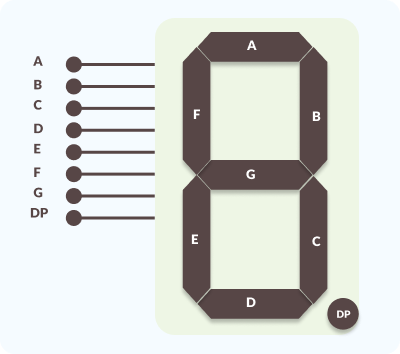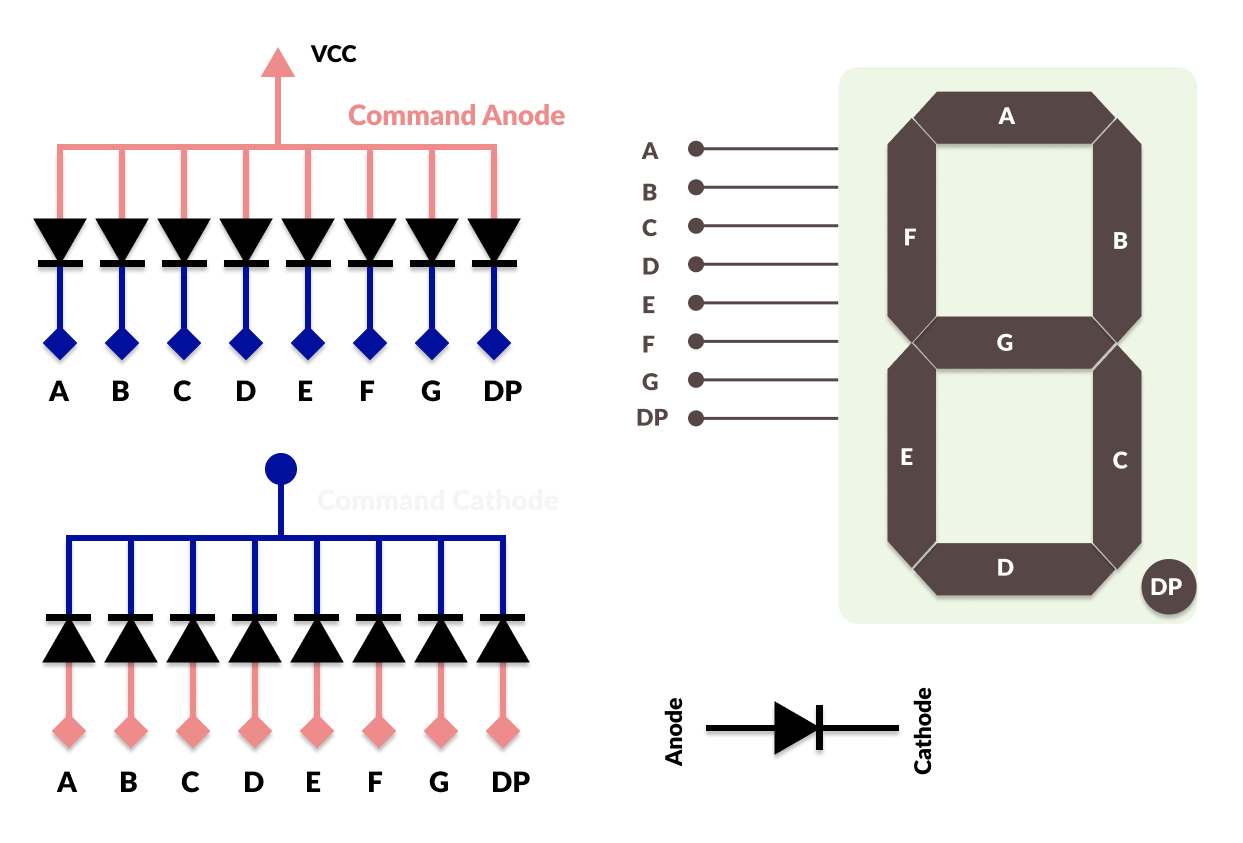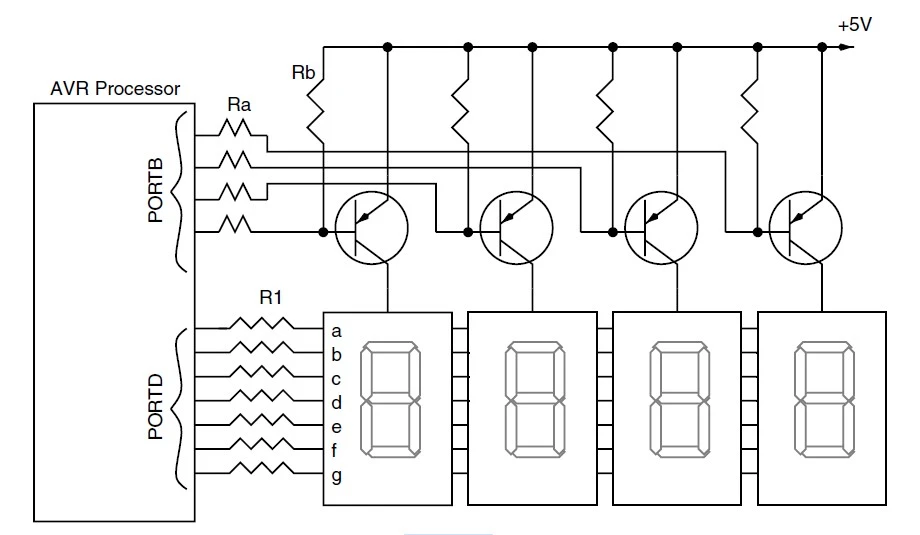Understanding 7-Segment Display
Seven segment display is a visual output device that consists of seven individually controllable LED (Light Emitting Diode) segments, arranged in a specific pattern to form numeric or alphanumeric characters. These segments are labeled from "a" to "g," and each can be illuminated individually or in combination to represent different numbers and characters.
A 7-segment display is a form of an electronic display device for displaying decimal numerals that is an alternative to more complex dot matrix displays.

7-segment displays are widely used in digital clocks, electronic meters, and other electronic devices for displaying numerical information.
Structure of a 7-Segment Display
A 7-segment display consists of seven LEDs (hence its name) arranged in a rectangular fashion. Each of the seven LEDs is called a segment because when illuminated the segment forms part of a numerical digit (both Decimal and Hex) to be displayed.

Segment A - This is the topmost segment of the display.
Segment B- This is the upper-right segment.
Segment C- This is the lower-right segment.
Segment D- This is the bottom-most segment.
Segment E- This is the lower-left segment.
Segment F- This is the upper-left segment.
Segment G- This is the middle segment.
The segments are usually named from A to G, starting from the top and moving clockwise, with the middle segment being G. When a specific segment is activated, it lights up or changes color, and by activating different combinations of these segments, different numbers or characters can be displayed.
For example, to display the number '3', you would light up segments A, B, C, D, and G. In a common anode display, you would send a 'LOW' signal to these segments, and in a common cathode display, you would send a 'HIGH' signal.
An additional 8th LED is sometimes used within the same package thus allowing the indication of a decimal point, (DP) when two or more 7-segment displays are connected together to display numbers greater than ten.
Types of 7-Segment Display
There are mainly two types of seven-segment displays: Common Cathode and Common Anode.

Common Cathode
In Common Cathode all the negative terminals (cathodes) of all the 8 LEDs are connected together (named COM).
Common Anode
All the positive terminals (Anodes) are left alone. But, in Common Anode all the positive terminals (Anodes) of all the 8 LEDs are connected together (named COM), and all the negative terminals are left alone.
Efficient Control of Multiple Seven-Segment Displays Using Multiplexing
Multiplexing is a technique used to control multiple seven-segment displays using fewer pins than would normally be needed. This is particularly useful when you want to display numbers or characters on more than one seven-segment display, but have a limited number of output pins on your microcontroller or other digital device.
In a multiplexed seven-segment display setup, all similar segments of each display are connected together.
For example, all the 'A' segments of each display are connected together, all the 'B' segments are connected together, and so on. This means that you can control all the 'A' segments (or any other segment) at once by sending a signal to just one pin.

To display different numbers or characters on each display, you need a way to control each display separately. This is done by connecting each display to a separate pin and then turning on each display one at a time in quick succession.
If this is done quickly enough (for example, 60 times per second or more), the human eye sees it as if all displays are on simultaneously due to a phenomenon known as the persistence of vision.
Digits And Characters Table for
common cathode
The digits 0-9 and a few other characters for a common cathode seven-segment display, along with their decimal and hexadecimal representations.
| Character |
Decimal |
Hexadecimal |
| 0 |
63 |
0x3F |
| 1 |
6 |
0x06 |
| 2 |
91 |
0x5B |
| 3 |
79 |
0x4F |
| 4 |
102 |
0x66 |
| 5 |
109 |
0x6D |
| 6 |
125 |
0x7D |
| 7 |
7 |
0x07 |
| 8 |
127 |
0x7F |
| 9 |
111 |
0x6F |
| A |
119 |
0x77 |
| b |
124 |
0x7C |
| C |
57 |
0x39 |
| d |
94 |
0x5E |
| E |
121 |
0x79 |
| F |
113 |
0x71 |
Digits And Characters Table for
common anode
The digits 0-9 and a few other characters for a common anode seven-segment display, along with their decimal and hexadecimal representations.
| Character |
Decimal |
Hexadecimal |
| 0 |
192 |
0xC0 |
| 1 |
249 |
0xF9 |
| 2 |
164 |
0xA4 |
| 3 |
176 |
0xB0 |
| 4 |
153 |
0x99 |
| 5 |
146 |
0x92 |
| 6 |
130 |
0x82 |
| 7 |
248 |
0xF8 |
| 8 |
128 |
0x80 |
| 9 |
144 |
0x90 |
| A |
136 |
0x88 |
| b |
131 |
0x83 |
| C |
198 |
0xC6 |
| d |
161 |
0xA1 |
| E |
134 |
0x86 |
| F |
142 |
0x8E |